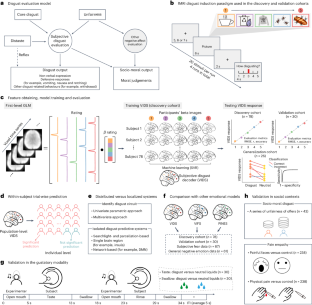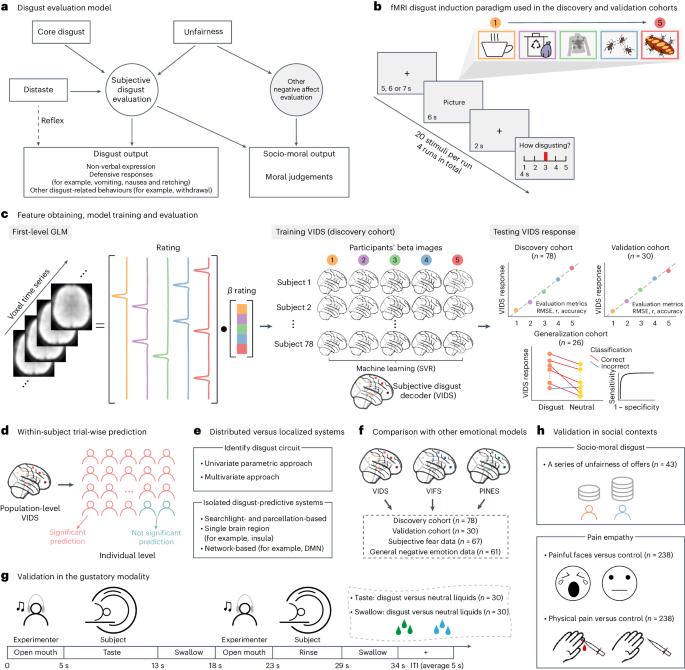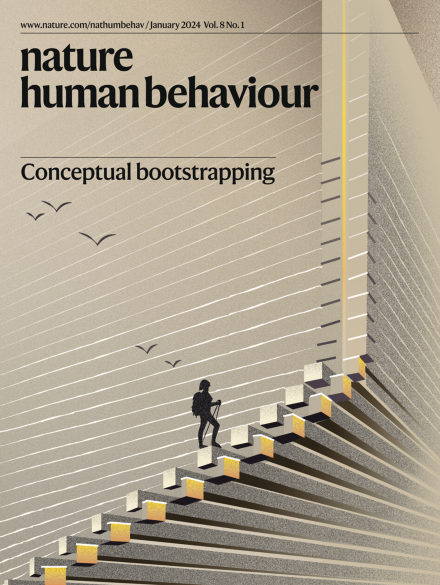主观厌恶的神经功能特征可普遍适用于口腔厌恶和社会道德环境
IF 21.4
1区 心理学
Q1 MULTIDISCIPLINARY SCIENCES
引用次数: 0
摘要
虽然厌恶源于哺乳动物的硬连线厌恶反应,但人类对厌恶的有意识体验在很大程度上取决于主观评价,甚至可能延伸到社会道德环境中。在一系列研究中,我们将功能磁共振成像与基于机器学习的预测建模相结合,建立了一个全面的主观厌恶神经生物学模型。所开发的神经功能特征能准确预测发现组(78 人)和预注册验证组(30 人)中自我报告的瞬间主观厌恶感,并能在核心厌恶感(34 人和 26 人)、味觉厌恶感(30 人)和社会道德厌恶感(43 人)情境中普遍适用。恶心体验在分布式皮层和皮层下系统中编码,并在感知间情绪意识和意识评估系统中与主观恐惧或负面情绪表现出独特和共享的神经表征,而这些表征最准确地预测了各自的目标体验。我们为厌恶提供了准确的功能磁共振成像特征,极有可能解决目前的进化争论。本文章由计算机程序翻译,如有差异,请以英文原文为准。


A neurofunctional signature of subjective disgust generalizes to oral distaste and socio-moral contexts
While disgust originates in the hard-wired mammalian distaste response, the conscious experience of disgust in humans strongly depends on subjective appraisal and may even extend to socio-moral contexts. Here, in a series of studies, we combined functional magnetic resonance imaging with machine-learning-based predictive modelling to establish a comprehensive neurobiological model of subjective disgust. The developed neurofunctional signature accurately predicted momentary self-reported subjective disgust across discovery (n = 78) and pre-registered validation (n = 30) cohorts and generalized across core disgust (n = 34 and n = 26), gustatory distaste (n = 30) and socio-moral (unfair offers; n = 43) contexts. Disgust experience was encoded in distributed cortical and subcortical systems, and exhibited distinct and shared neural representations with subjective fear or negative affect in interoceptive-emotional awareness and conscious appraisal systems, while the signatures most accurately predicted the respective target experience. We provide an accurate functional magnetic resonance imaging signature for disgust with a high potential to resolve ongoing evolutionary debates. In support of an evolutionary model that links distaste, disgust and socio-moral processes, Gan et al. use functional magnetic resonance imaging to develop a neuromarker for subjective core disgust that generalizes to oral distaste and unfairness.
求助全文
通过发布文献求助,成功后即可免费获取论文全文。
去求助
来源期刊

Nature Human Behaviour
Psychology-Social Psychology
CiteScore
36.80
自引率
1.00%
发文量
227
期刊介绍:
Nature Human Behaviour is a journal that focuses on publishing research of outstanding significance into any aspect of human behavior.The research can cover various areas such as psychological, biological, and social bases of human behavior.It also includes the study of origins, development, and disorders related to human behavior.The primary aim of the journal is to increase the visibility of research in the field and enhance its societal reach and impact.
 求助内容:
求助内容: 应助结果提醒方式:
应助结果提醒方式:


